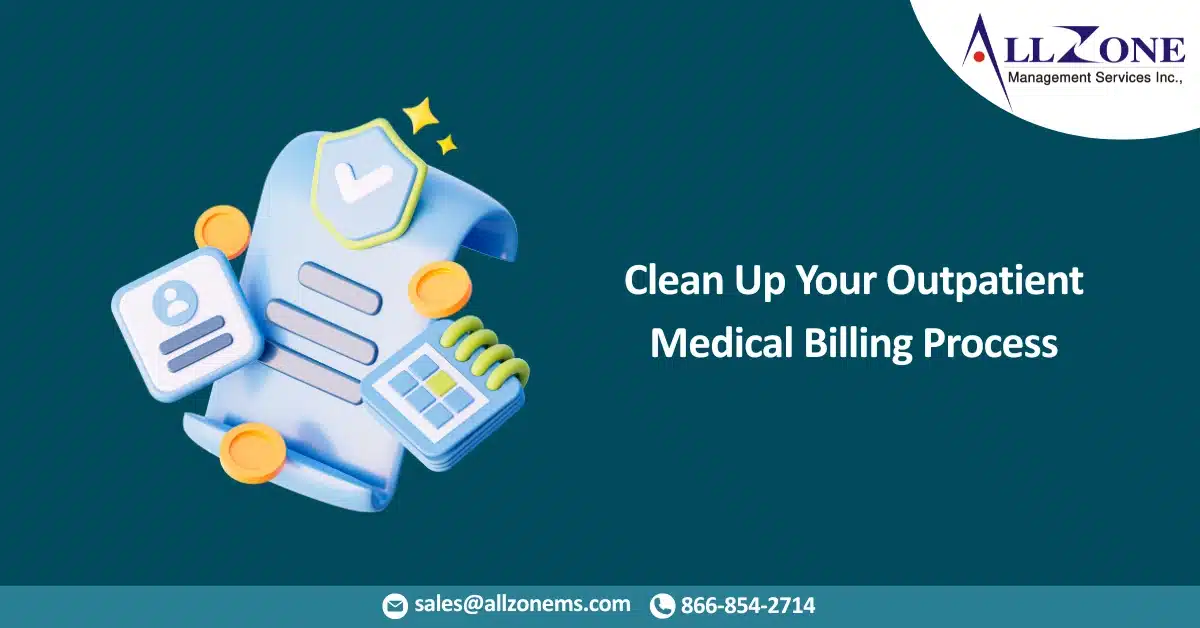Is your outpatient medical billing process feeling more like a tangled web than a well-oiled machine? You’re not alone. In the fast-paced world of healthcare, billing errors and inefficiencies can easily creep in, leading to delayed payments, increased denials, and a significant drain on your practice’s resources.
The good news? You don’t have to overhaul your entire system overnight. By taking focused action on key areas, you can start seeing tangible improvements in your revenue cycle management. Here are eight things you should do now to clean up your outpatient medical billing and pave the way for a healthier bottom line:
1. Conduct a Quick Insurance Verification Audit:
Don’t assume the insurance information you have on file is always accurate. Even a small percentage of outdated or incorrect payer details can lead to a cascade of denials. Take an hour today to randomly select 10-15 recent patient encounters and verify their current insurance eligibility.
- Actionable Step: Use your practice management system or payer portals to check the active status and coverage details for these patients. Note any discrepancies and implement a stricter upfront verification process for all new and returning patients. This simple audit can highlight immediate areas for improvement and prevent future headaches.
2. Review Your Top 5 Denial Reasons:
Denials are a major bottleneck in the billing cycle. They cost time, money, and staff resources. Your practice management system likely tracks denial reasons. Pull a report for the last month and identify your top five denial codes.
- Actionable Step: Once you have this list, investigate the root cause of each denial. Are they related to coding errors, missing documentation, prior authorization issues, or incorrect patient demographics? Addressing these recurring issues proactively will have a significant impact on your clean claim rate.
3. Standardize Your Documentation Procedures:
Clear, concise, and complete documentation is the bedrock of accurate medical billing. Inconsistent or missing information can lead to coding errors and denials. Schedule a brief team meeting this week to review your current documentation protocols.
- Actionable Step: Ensure everyone understands the specific documentation requirements for different services and payers. Implement templates or checklists to guide providers and staff in capturing all necessary details, including diagnoses, procedures, and the medical necessity for the services rendered.
4. Reconcile Your Claims Regularly (at least weekly):
Don’t let submitted claims disappear into the void. Regular reconciliation is crucial for identifying and addressing payment discrepancies promptly. Dedicate a specific time slot each week to compare your submitted claims with the payments received from payers.
- Actionable Step: Identify any underpayments, overpayments, or unpaid claims. Investigate the reasons for these discrepancies and take immediate action to resolve them, whether it’s resubmitting a corrected claim or appealing a denial.
5. Train Your Staff on Coding Updates and Guidelines:
Medical coding is constantly evolving. New codes are introduced, guidelines change, and payer-specific rules are updated frequently. Outdated coding knowledge can lead to significant errors and compliance issues. Schedule a short in-service training session this month focusing on recent coding updates relevant to your specialty.
- Actionable Step: Ensure your billing and coding staff have access to the latest coding manuals, newsletters, and online resources. Encourage them to participate in webinars or workshops to stay current with industry best practices.
6. Evaluate Your Current Billing Software and Processes:
Is your current medical billing software meeting your needs? Are your internal processes efficient and streamlined? Take some time to map out your entire outpatient billing workflow, from patient registration to payment posting.
- Actionable Step: Identify any bottlenecks, redundancies, or manual processes that could be automated or improved. Research whether your current software offers features you’re not utilizing or if it’s time to consider an upgrade to a more robust system.
7. Improve Communication Between Clinical and Billing Teams:
A disconnect between your clinical and billing teams can lead to misunderstandings, errors, and delays. Foster a culture of open communication where both teams feel comfortable asking questions and sharing information.
- Actionable Step: Implement regular interdepartmental meetings or establish clear channels of communication for addressing billing-related queries or documentation issues. This collaboration can significantly reduce errors and improve the overall efficiency of your billing process.
8. Stay Informed About Payer Policies and Updates:
Each payer has its own specific rules, regulations, and payment policies. Ignoring these nuances can lead to increased denials and payment delays. Dedicate some time each month to review payer newsletters, websites, and announcements for any policy changes.
- Actionable Step: Subscribe to relevant payer updates and disseminate this information to your billing team. Understanding payer-specific requirements for prior authorizations, coding guidelines, and claim submission can help you avoid costly errors.
Taking Action Today for a Healthier Tomorrow:
Cleaning up your outpatient medical billing doesn’t have to be an overwhelming task. By focusing on these eight actionable steps, you can start making meaningful improvements to your revenue cycle management right away. Remember, consistency and attention to detail are key. Implementing these changes will not only reduce errors and denials but also free up your staff to focus on what matters most: providing excellent patient care. Start today, and watch your billing process transform from a source of stress to a pillar of financial stability for your practice.

